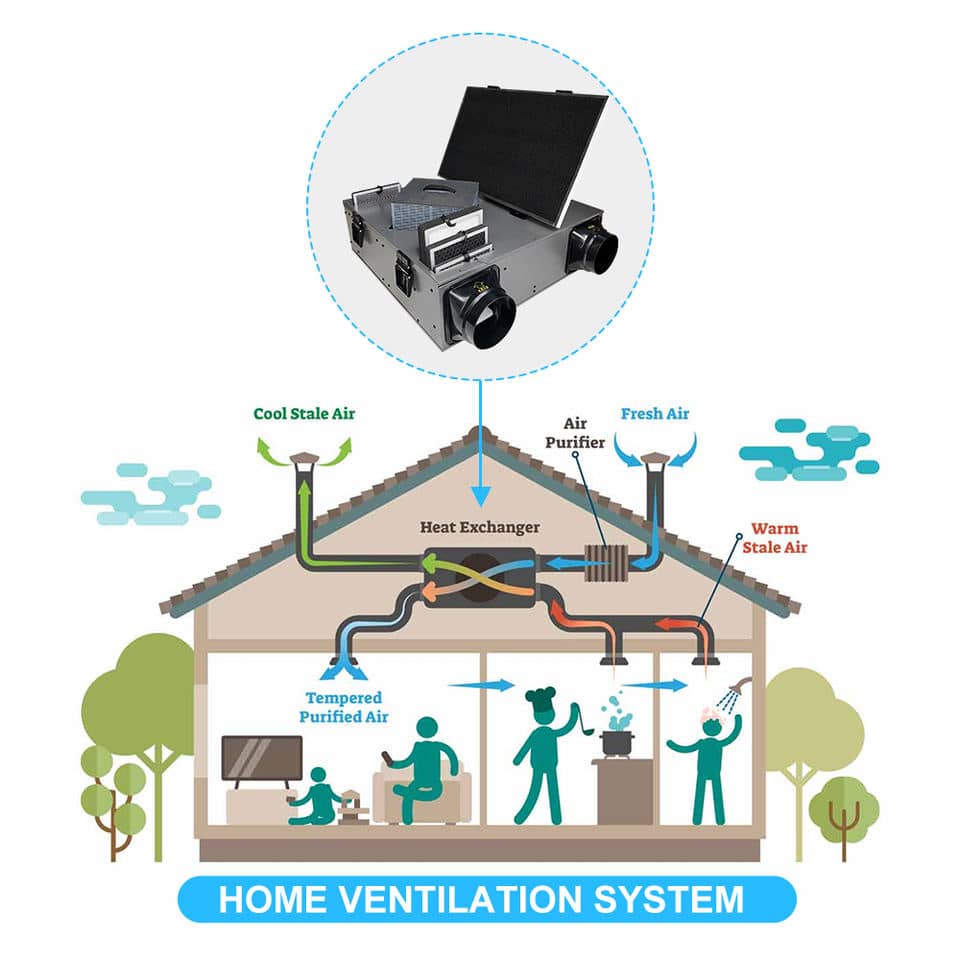
Heat recovery ventilation fans (HRVs) are among the most effective solutions for creating a healthier indoor environment while reducing energy waste. These systems are widely used in residential, commercial, and industrial ventilation projects, offering the dual benefits of improved indoor air quality and enhanced energy efficiency. In this in-depth guide, we will explore what HRVs are, how they work, their benefits, installation steps, operating tips, maintenance requirements, and why MiWind is your ideal partner for advanced ventilation technology.
A heat recovery ventilation fan—also called an HRV ventilation system or fresh air heat exchanger—is a mechanical device designed to replace stale indoor air with fresh outdoor air while recovering heat from the outgoing airflow. Instead of letting heated or cooled air escape completely, an HRV uses a heat exchanger core to transfer warmth (or coolness) from the exhaust air to the incoming fresh air. This process dramatically reduces heating and cooling losses, ensuring indoor comfort year-round.
Unlike traditional exhaust fans that simply expel air, HRVs retain up to 70-90% of the thermal energy, making them a top choice for energy-conscious homes and businesses.
Transfers only heat between outgoing and incoming air streams. Ideal for cold or dry climates where humidity control is less critical.
Transfers both heat and moisture, which helps maintain balanced humidity levels indoors. Preferred in humid climates or places with significant seasonal humidity changes.
An HRV continuously circulates fresh, filtered outdoor air while expelling pollutants, allergens, and odors. This helps reduce:
For households with children, elderly residents, or individuals with respiratory conditions, HRVs are an essential investment in long-term health.
By reusing up to 90% of the heat from the outgoing air, HRVs:
HRVs help regulate indoor humidity levels, reducing condensation on windows and preventing mold and mildew growth. In climates with cold winters, this moisture control is especially valuable.
Most modern HRVs feature:
Regular maintenance keeps your HRV running efficiently and extends its lifespan.
Clean washable filters every 2–3 months; replace disposable filters per manufacturer's schedule. MiWind's HRVs feature multi-stage filtration (pre-filter, carbon filter, HEPA filter) for maximum air purity.
Remove the heat exchanger core annually and wash with mild soapy water (if the manufacturer allows).
Check ducts yearly for dust, debris, or mold buildup.
Inspect for unusual noises or vibrations; lubricate only if the model requires it.
With over 20 years of manufacturing excellence, MiWind offers HRV systems designed for:
MiWind systems are easy to install, simple to maintain, and built for long-term reliability—making them a smart investment for homeowners and business owners alike.
A heat recovery ventilation fan is not just a luxury—it's a necessity for maintaining healthy indoor air and reducing energy costs. By understanding its operation, choosing the right model, and committing to regular maintenance, you can enjoy fresher air, improved comfort, and lower utility bills.
For the best results, choose MiWind HRV systems—engineered to deliver maximum performance with minimal environmental impact. Whether for your home, office, or industrial facility, MiWind ensures that every breath you take is fresh, clean, and energy-smart.